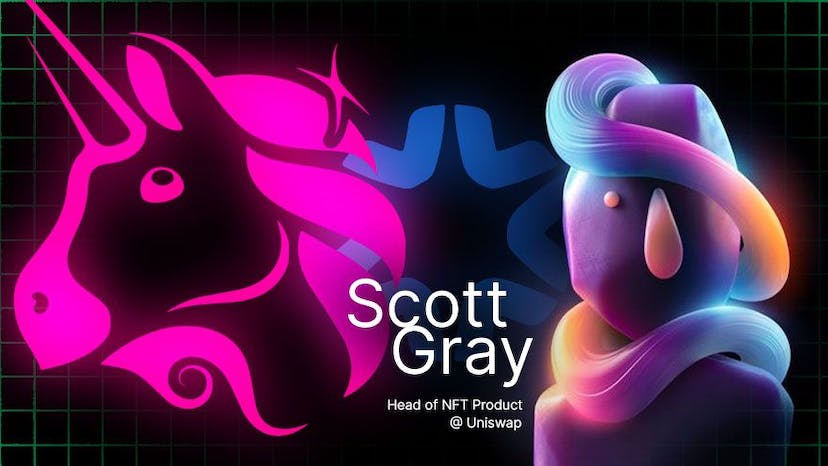
“Most things that succeed don’t require retraining 250 million people.”
Wired magazine published this line in 1995, in reference to the Internet.
You could apply the same thought to the metaverse. There is a lot of skepticism about this digital ecosystem in the market, and many critics have dismissed the innovation as little more than hype or retrofitted virtual reality, which never took off. Yet the skeptics are wrong. They often start with a flawed premise — that the metaverse is being built from the ground up.
5G and Beyond
That task – creating a massive virtual network of worlds that anyone can access – is daunting, especially when you consider that the hardware needed (VR and Augmented Reality) and the connectivity required (ideally 5G and beyond) may not be ready.

Uniswap Aims To Become Marketplace For ‘All Digital Assets’: NFT Chief
New Aggregator Won’t Compete With Sudoswap On AMM Pools, Plans To Integrate Blur
Yet this task is doable. Skeptics aren’t considering the metaverse in the proper context. The metaverse differs from the internet in key ways: it is spatial, experiential, and highly interactive. The metaverse is as different from the internet as online shopping is from real life shopping.
Think of the metaverse — or a collection of smaller metaverses – as a continuation of the Internet, not a separate entity. The telephone evolved from landlines to car phones to bulky mobile phones to flip phones, and ultimately to small but powerful computers in our hands. This evolution took decades. It required breakthrough design and engineering, powerful new microprocessors, and operating software. And then there was the small issue of adoption by consumers. The evolution of the metaverse will not be different.
Use Cases
In the early ‘90’s, my college launched peer-to-peer rooms on our campus intranet. Soon after, companies like AOL, Prodigy, and Compuserve produced subscription access to the World Wide Web. Most of us did not recognize those events as stepping stones to the near-infinite, decentralized network of today upon which most of the society functions.
The Metaverse is similarly creeping into our daily lives. Many are aware of it, or at least think we are: One survey found that 38% of respondents report being familiar with the Metaverse, and yet only 16% can properly define the term. In other words, we know some sort of revolution is knocking on our door. We just aren’t sure what that revolution is or looks like.
Even those not paying close attention can see obvious signs of this evolution. Facebook became Meta. Magic Leap raised billions for its hardware. Apple filed patents but has yet to reveal its potentially game-changing roadmap.
But there are ways we can see it already if we know where to look.
Nike has launched a brand activation with its NIKELAND through Roblox. This digital world lets customers try on different Nike products, but also play games such as tag, dodgeball, and the floor is lava, according to the company. The digital world even empowers users to mirror in real life movements with the virtual world, taking “advantage of accelerometers in their mobile devices to transfer offline movement to online play.”
The investment giant Fidelity, meanwhile, has launched The Fidelity Stack in Decentraland — an eight-story digital building with the mission of turning Metaverse visitors into investors, according to Reuters. The interactive and gamified environment gives visitors a unique and immersive financial education experience. Lowe’s, the home improvement store, lets visitors download more than 500 product assets for free to help envision their home layout and improvement ideas.
Even those not paying close attention can see obvious signs of this evolution. Facebook became Meta. Magic Leap raised billions for its hardware. Apple filed patents but has yet to reveal its potentially game-changing roadmap. Alibaba, Google, Lenovo, HP, Samsung, Qualcomm, ByteDance, are building out business use cases in the Metaverse.
Dynamic Presence
Last November, Microsoft announced the upcoming launch of its “Mesh” platform, in which the Microsoft Teams video conferencing platform will enable users to join via a 3D avatar. This will enable those who are unable or unwilling to join a meeting via video to still have a dynamic presence on a call. The thinking is that this will make interactions more personal even in a digital world.
What is not as obvious are the use cases — and the companies behind them — whose incremental steps add up to voluminous efficacy. These use cases push the boundaries for what is possible even now, let alone once the metaverse or metaverses fully takes shape.
Where Do We Go from Here?
There are real obstacles for the Metaverse to overcome, no doubt. Harassment and discrimination are just as impactful in a virtual world as they are in the real world. Intel claims we will need a thousand-fold increase in computing capability.
There are and will continue to be numerous cultural, ethical, technological, and political challenges to the Metaverse. Perhaps Unilever Chief Digital & Commercial Officer Conny Braams put it best: “As we begin to create and invest in the next environment where people spend their time, and their money, we need to be clear on what we are building and what we need to prevent.”

Mints Double at Music NFT Platform as Collectors Shrug Off Bear Market
Sound Records Heavy Minting Action in Last Two Months
And the naysayers will say these challenges are evidence of the Metaverse’s imminent demise. They will echo the opening quote of this piece — there are simply too many people for the Metaverse to reach. Slow adoption will be mistaken for stalled progress. We’ll see the articles and talking heads claiming that the Metaverse is dead. And granted, we may not see a single, decentralized Metaverse in the near future. But we’re already seeing companies expand their own smaller metaverses or microverses, while decentralized apps also become more widespread.
But Rome wasn’t built in a day and neither was the Internet. In 1990, there was less than one internet user per 100 consumers in the U.S. By 2019, that number was nearly 90 out of 100. That’s a remarkable shift, but it also took decades to achieve that level of mainstream use. The same will be true of the Metaverse.
Tangible Examples
We’re already seeing tangible examples of its adoption. And once this adoption happens, the use cases are limitless. We’ll be able to authentically interact with our colleagues and family members, even when they are on the other side of the globe.
We’ll be able to train police officers, doctors, and first responders by putting them in the most realistic and challenging simulations — providing them with a wealth of experience before their first day on the job. Users will be able to visit places on the other side of the world, empowering them to understand different cultures and expanding their perspective.
Stephen Fromkin is the co-founder of Talespin.
文章来源于互联网:Forget the Snickering… Here’s Why the Metaverse Will Prevail
 The Defiant
The Defiant





